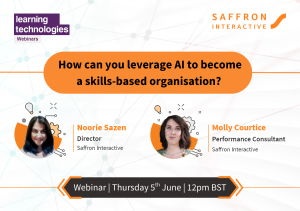Last October, it was announced that there are officially more mobile devices than people in the world – over 7.2 billion. “Mobile,” with respect to technology, is summed up in the words “portable” and “personal”. For the new generation of digitally connected workers and students, it means carrying a device which enables you to learn in a new way compared to the old model: just in time and just enough.
So what is driving organisations to adopt a mobile-first learning strategy? Here are five key advantages of the mobile miracle.
1. Convenience and ease of access

mLearning provides easy access to learning at a time and place convenient to learners. Since learners normally have their smartphones or tablets with them most of the time, they can have access to courses or learning tools anytime and anywhere, such as between client meetings, while travelling or waiting.
2. Just-in-time learning

mLearning caters to the impulsive need of learners to access information. Today, what will you do to find directions to a new place or find out the movie that is playing in the theatre close to your home? You just go online for information. mLearning provides similar facilities for employees to access information pertaining to their jobs at the touch of a screen.
3. Bite-sized modules

Modules developed for specific purposes have a short duration, typically around five minutes. Hence, one mlearning module will focus on just one main idea or concept. For example, if you want your employees to learn the correct operating procedure for a piece of machinery, you can develop a module that focuses on just that, with probably a quick list of do’s and don’ts.
4. Contextual and informal

Content is usually contextual, that is, the training refers to a specific situation or a context that learners find themselves in. The context can be their location, activity or learning goals and is job-specific in an organisation. Mobile devices understand locations and store more information about users tha
n PCs, assisting contextual learning.
5. Application-oriented

mLearning solutions should focus on sharing knowledge that is ready for application: at the time and place when the learner requires that specific information and can apply it immediately. This avoids the problem of learners forgetting information before they need to apply it, and the principle also questions the value of large amounts of learning itself. Isn’t mlearning more about learning what you need to perform better in a specific context, something which you may not even need to repeat?
What’s next?
There is no doubt that the future of learning is “mobile”. The term “mobile” doesn’t just mean the use of mobile phones, but includes any mobile-based technologies, and the future of mlearning looks good.
Issues surrounding the cost of hardware and software are no longer major concerns. The cost of the hardware (such as smartphones, high-speed processors, storage) is falling, due to emerging technologies. The cost of software is also lowering, since most applications (such as LMSs) and social software tools are now web-based. As a result, mlearning is anticipated to enjoy steady growth within the next few years.
Mobile is still a very young technology, so we don’t even know what the future advantages will be. But one thing is clear: you need to embrace mlearning quickly, as your learners already have!




